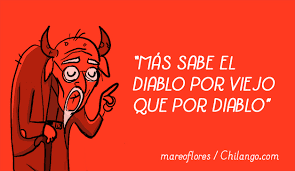Four Articles and a Poem
Weekly, I post four articles that I found significant and a poem
accompanied by some comments about what we can learn from them. Our
lives are enriched by seeing better. Each week, one article comes from
the world of photography, a discipline that is about seeing. Another
article comes from the world of technology, hence seeing something of
the future. Another article takes up an aspect of our life together,
seeing more clearly the other. Another article refers to faith, seeing
the unseen. Finally, the weekly post concludes with a poem, because
poetry is about seeing words whose arrangement allows us to see anew.
This week, we will look up inside of churches, we will hear from a physicist on inequality, we will consider remedies to gun violence, before walking across the prairies with Uncle Walt (a.k.a. Walt Whitman).
"The Prairie-Grass Dividing"
by Walt Whitman
The prairie-grass dividing, its special odor breathing,
I demand of it the spiritual corresponding,
Demand the most copious and close companionship of men,
Demand the blades to rise of words, acts, beings,
Those of the open atmosphere, coarse, sunlit, fresh, nutritious,
Those that go their own gait, erect, stepping with freedom and command, leading not following,
Those with a never-quell'd audacity, those with sweet and lusty flesh clear of taint,
Those that look carelessly in the faces of Presidents and governors,
as to say Who are you? Those of earth-born passion, simple, never constrain'd, never obedient,
Those of inland America.
This week, we will look up inside of churches, we will hear from a physicist on inequality, we will consider remedies to gun violence, before walking across the prairies with Uncle Walt (a.k.a. Walt Whitman).
- Vertical Churches. Richard Silver has gathered an extraordinary collection of churches. His images uniquely look at architecture, building composite photographs from several images that seamlessly reveal a structure’s interior. Among his newest images are a series that captures the insides of New York churches, timed for the Pope Francis’ visit to the U.S. soil. The images, composed of 6-10 shots, form a vertical panorama.
- Stephen Hawking: ‘Technology seems to drive inequality.’ On the science front, the World Economic Forum website provided a pithy summary to a longer interview of an interview of the physicist on Reddit. Among other comments, Hawking concludes that technology exacerbates inequality. Read the short version from the WEF, but, if you want more meat, take some time with the original from Reddit.
- The epidemic of gun violence is treatable. From CNN, Dr. Sanjay Gupta tells of the work of Dr. Gary Slutkin, founder of Ceasefire, now known as Cure Violence. Slutkin, an epidemiologist and a physician who for ten years battled infectious diseases in Africa, says that violence directly mimics infections like tuberculosis and AIDS, thus the treatment ought to follow the regimen applied to these diseases: go after the most infected, and stop the infection at its source. Amid the gun violence that harms so many in this nation, we used this model in South Bend during my time there to great effect.
- To gun violence, Archbishop Cupich says 'Enough!' Chicago's archbishop, Blase Cupich, impresses me in so many ways. A recent address to the Chicago Federation of Labor underscored the commitment of the Church to organized labor. In the wake of recent gun violence, both in Chicago and around the country, Archbishop Cupich penned a stirring call to action in the Chicago Tribune.
"The Prairie-Grass Dividing"
by Walt Whitman
The prairie-grass dividing, its special odor breathing,
I demand of it the spiritual corresponding,
Demand the most copious and close companionship of men,
Demand the blades to rise of words, acts, beings,
Those of the open atmosphere, coarse, sunlit, fresh, nutritious,
Those that go their own gait, erect, stepping with freedom and command, leading not following,
Those with a never-quell'd audacity, those with sweet and lusty flesh clear of taint,
Those that look carelessly in the faces of Presidents and governors,
as to say Who are you? Those of earth-born passion, simple, never constrain'd, never obedient,
Those of inland America.




Comments
Post a Comment